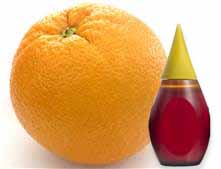Proceedings of the Nutrition Society of Australia, 1990 pg. 233.
Sarantinos studied 13 children, 4-14 years old, who had been at least 6 weeks on a diet free of synthetic food dyes as part of their treatment for ADHD. The behavior of 9 of them had improved, according to the parents, while parents of the other 4 weren’t sure whether they had improved.
children, 4-14 years old, who had been at least 6 weeks on a diet free of synthetic food dyes as part of their treatment for ADHD. The behavior of 9 of them had improved, according to the parents, while parents of the other 4 weren’t sure whether they had improved.
Sarantinos performed a double-blind placebo-controlled study on these children, using both the traditional Conners scale and the more sensitive Rowe scale to measure symptoms, and found that only a few of the children reacted to the dye challenges. Nevertheless, he said, a dye-free diet may be useful for some.
QUOTE: “As part of their overall management, a diet excluding synthetic food colourings may be of benefit in modifying the behaviour of a small number of children with attention deficit disorder.”
NOTE: Sarantinos used only 10 mg Yellow 5 or Yellow 6. That is less than half the too-small amount that even the Nutrition Foundation recommended for researchers to use. No matter how beautifully designed the study, when you use only a tiny amount of food dye as your “challenge,” you should not expect to get dramatic results.
NOTE: He put his small amount of dye in orange juice. As any Feingold mom can tell you, orange juice is a salicylate and all by itself may cause problems (which Sarantino noted for two of the children). Giving a salicylate-containing juice for both placebo and challenge material will certainly dilute any response you hope to receive.




















